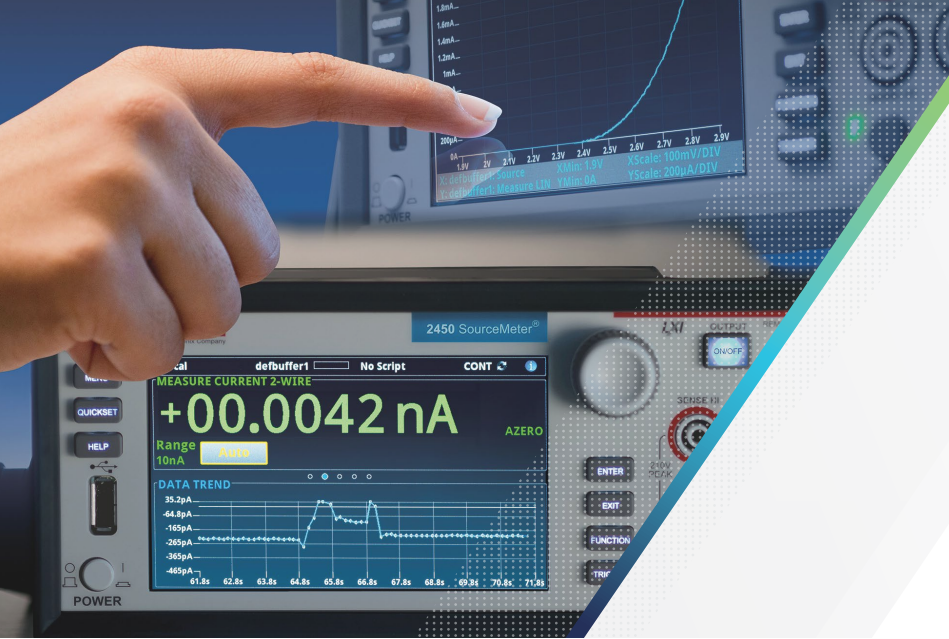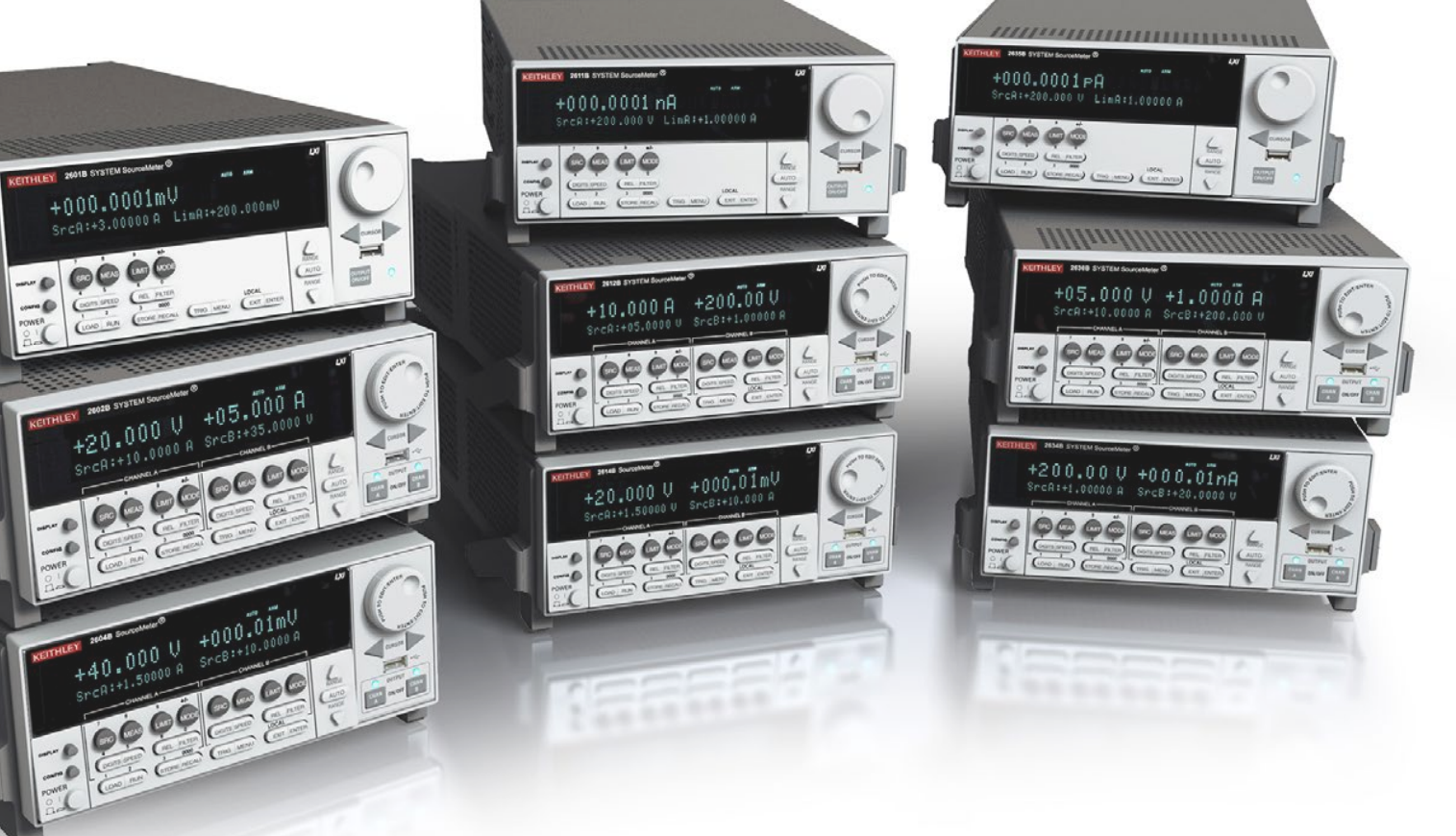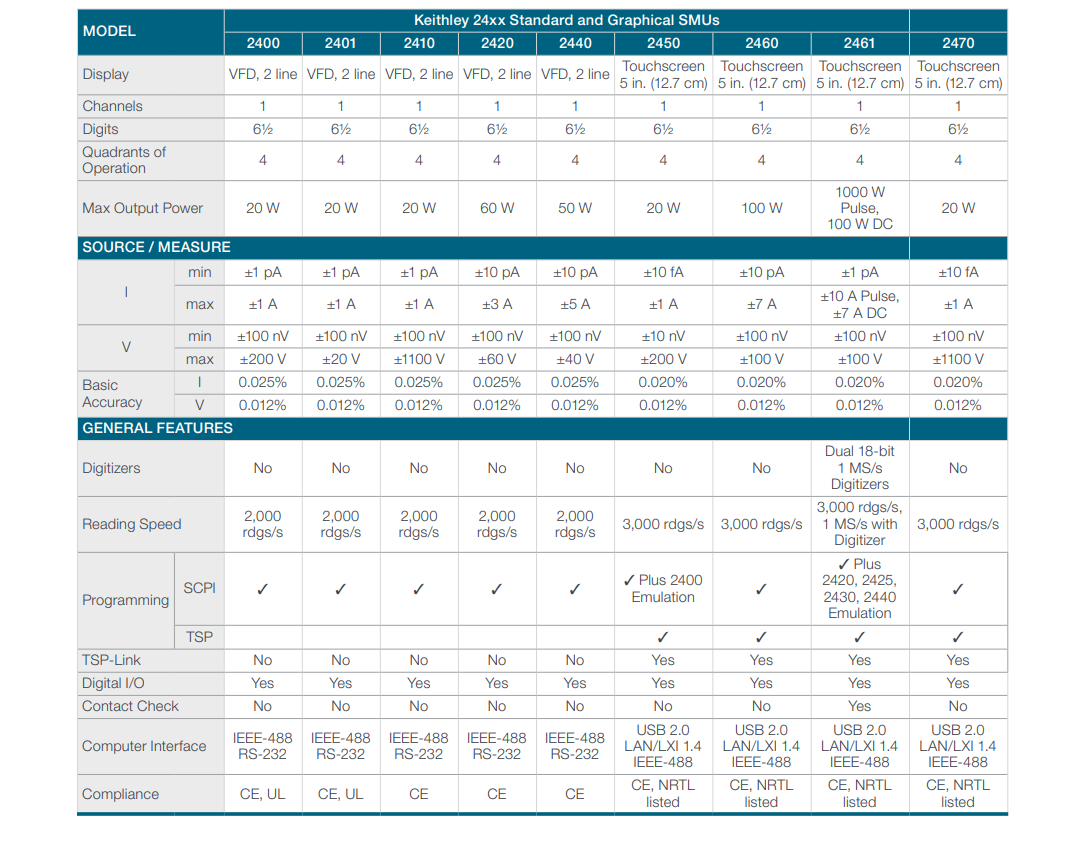2450 Keithley SUM Source Measurement Unit | Tektronix
Would you like to learn about an instrument that can provide you with an accurate, flexible, and convenient source measurement solution? Then you'll want to take a look at the Keithley 2450 Source Measurement Unit (SMU). It's a high-performance instrument that combines voltage, current, and resistance sourcing and measurement capabilities, and it also has a five-inch, high-resolution capacitive touchscreen that lets you intuitively operate and control the instrument without complex programming or menu navigation. In this article, I will introduce you to the key features, application areas and benefits of the Keithley 2450 SMU, which I hope will help you better understand the appeal of this instrument.

The Keithley 2450 SMU is a next-generation source measurement unit with the following key features:
- Five-inch high-resolution capacitive touchscreen GUI: This is the most notable innovation of the Keithley 2450 SMU, allowing you to set parameters, view data, perform tests, save results, and more via the touchscreen, eliminating the need for traditional knobs or buttons. The touchscreen also has built-in context-sensitive front-panel assistance that provides you with real-time operating instructions and prompts. You can also use the touchscreen to select different display modes, such as digital meter, graphic waveform, histogram, etc., to suit different testing needs and preferences.
- 0.012% Base Measurement Accuracy, 6½-bit Resolution: The Keithley 2450 SMU utilizes a high-precision analog-to-digital converter and low-noise amplifiers to provide up to 6½-bit resolution and 0.012% base measurement accuracy. This means you can accurately and reliably detect and analyze small signal variations, whether it's voltage, current, or resistance.The Keithley 2450 SMU also supports a wide range of measurement speeds and filtering options, giving you the flexibility to adjust to your test conditions and accuracy requirements.
- Source and sink (four-quadrant) operation: The Keithley 2450 SMU can be used not only as a precision voltage or current source to drive the DUT, but also as an electronic load to absorb the power generated by the DUT. This is known as four-quadrant operation, and it allows the Keithley 2450 SMU to accommodate a wide variety of active and passive DUTs, such as diodes, transistors, LEDs, solar cells, and more. Four-quadrant operation also allows you to simulate different operating states and fault conditions for more comprehensive and in-depth testing.

- 2450 SCPI and TSP® Script Programming Modes: The Keithley 2450 SMU supports two programming modes, the standard SCPI (Standard Command Collection) programming mode, and the unique TSP (Test Script Processor) scripting mode. The SCPI programming mode allows you to control the instrument using a common command syntax and is compatible with Keithley 2400 Series SMUs, making it easy for you to migrate or upgrade, while the TSP scripting mode lets you run Lua-based scripts inside the instrument for higher execution speeds and greater customization capabilities. You can also connect multiple Keithley 2450 SMUs via the TSP-Link/Ethernet interface to form a synchronized multichannel test system.
The Keithley 2450 SMU is a universal SMU for everyone, and can be used in a wide range of applications such as IV testing, characterization, and life testing of electronic components and semiconductor devices. Some typical examples of applications are listed below:
- Semiconductor Device Testing: The Keithley 2450 SMU can perform static and dynamic IV testing on a variety of semiconductor devices, such as diodes, transistors, MOSFETs, IGBTs, etc., including forward and reverse currents, voltages, resistances, on-voltages, cutoff currents, saturation currents, threshold voltages, and other parameters. You can also utilize the Keithley 2450 SMU's four-quadrant operation to simulate different load conditions, such as short-circuit, open-circuit, overload, and more, to check device stability and reliability.

- LED Testing: The Keithley 2450 SMU allows you to test the optoelectronic characteristics of optoelectronic devices such as LEDs, including forward voltage, forward current, optical output power, optical efficiency, and other parameters. You can also utilize the Keithley 2450 SMU's pulse mode to drive LEDs with a low duty cycle to reduce the impact of self-heating on test results. In addition, you can extend the Keithley 2450 SMU's measurement capabilities, such as wavelength and color temperature, with an external optical power meter or spectrometer.
- Solar Cell Testing: The Keithley 2450 SMU can perform photovoltaic characterization tests on photovoltaic devices such as solar cells, including parameters such as open-circuit voltage, short-circuit current, maximum power point, and fill factor. You can also utilize the Keithley 2450 SMU's four-quadrant operation to simulate different solar irradiation intensities and load impedances to evaluate device conversion efficiency and output performance. In addition, you can simulate different light and temperature conditions with an external solar simulator or environmental chamber to examine the device's environmental adaptability.
The Keithley 2450 SMU is an all-in-one instrument that offers several advantages:
- Space and cost savings: The Keithley 2450 SMU can replace traditional combinations of multiple instruments, such as power supplies, multimeters, and loads, saving space and cost in the lab or on the production line. You only need one Keithley 2450 SMU for a variety of source measurement tasks, eliminating the need to frequently switch or connect different instruments.
- Increased efficiency and convenience: The Keithley 2450 SMU's touchscreen user interface lets you operate and control the instrument intuitively, without complex programming or menu navigation. You can quickly set parameters, view data, perform tests, save results, and more from the touchscreen, increasing test efficiency and convenience. You can also use the touchscreen to select different display modes, such as digital meter, graphic waveform, histogram, etc., to suit different testing needs and preferences.

Would you like to learn about an instrument that can provide you with an accurate, flexible, and convenient source measurement solution? Then you'll want to take a look at the Keithley 2450 Source Measurement Unit (SMU). It's a high-performance instrument that combines voltage, current, and resistance sourcing and measurement capabilities, and it also has a five-inch, high-resolution capacitive touchscreen that lets you intuitively operate and control the instrument without complex programming or menu navigation. In this article, I will introduce you to the key features, application areas and benefits of the Keithley 2450 SMU, which I hope will help you better understand the appeal of this instrument.

The Keithley 2450 SMU is a next-generation source measurement unit with the following key features:
- Five-inch high-resolution capacitive touchscreen GUI: This is the most notable innovation of the Keithley 2450 SMU, allowing you to set parameters, view data, perform tests, save results, and more via the touchscreen, eliminating the need for traditional knobs or buttons. The touchscreen also has built-in context-sensitive front-panel assistance that provides you with real-time operating instructions and prompts. You can also use the touchscreen to select different display modes, such as digital meter, graphic waveform, histogram, etc., to suit different testing needs and preferences.
- 0.012% Base Measurement Accuracy, 6½-bit Resolution: The Keithley 2450 SMU utilizes a high-precision analog-to-digital converter and low-noise amplifiers to provide up to 6½-bit resolution and 0.012% base measurement accuracy. This means you can accurately and reliably detect and analyze small signal variations, whether it's voltage, current, or resistance.The Keithley 2450 SMU also supports a wide range of measurement speeds and filtering options, giving you the flexibility to adjust to your test conditions and accuracy requirements.
- Source and sink (four-quadrant) operation: The Keithley 2450 SMU can be used not only as a precision voltage or current source to drive the DUT, but also as an electronic load to absorb the power generated by the DUT. This is known as four-quadrant operation, and it allows the Keithley 2450 SMU to accommodate a wide variety of active and passive DUTs, such as diodes, transistors, LEDs, solar cells, and more. Four-quadrant operation also allows you to simulate different operating states and fault conditions for more comprehensive and in-depth testing.

- 2450 SCPI and TSP® Script Programming Modes: The Keithley 2450 SMU supports two programming modes, the standard SCPI (Standard Command Collection) programming mode, and the unique TSP (Test Script Processor) scripting mode. The SCPI programming mode allows you to control the instrument using a common command syntax and is compatible with Keithley 2400 Series SMUs, making it easy for you to migrate or upgrade, while the TSP scripting mode lets you run Lua-based scripts inside the instrument for higher execution speeds and greater customization capabilities. You can also connect multiple Keithley 2450 SMUs via the TSP-Link/Ethernet interface to form a synchronized multichannel test system.
The Keithley 2450 SMU is a universal SMU for everyone, and can be used in a wide range of applications such as IV testing, characterization, and life testing of electronic components and semiconductor devices. Some typical examples of applications are listed below:
- Semiconductor Device Testing: The Keithley 2450 SMU can perform static and dynamic IV testing on a variety of semiconductor devices, such as diodes, transistors, MOSFETs, IGBTs, etc., including forward and reverse currents, voltages, resistances, on-voltages, cutoff currents, saturation currents, threshold voltages, and other parameters. You can also utilize the Keithley 2450 SMU's four-quadrant operation to simulate different load conditions, such as short-circuit, open-circuit, overload, and more, to check device stability and reliability.

- LED Testing: The Keithley 2450 SMU allows you to test the optoelectronic characteristics of optoelectronic devices such as LEDs, including forward voltage, forward current, optical output power, optical efficiency, and other parameters. You can also utilize the Keithley 2450 SMU's pulse mode to drive LEDs with a low duty cycle to reduce the impact of self-heating on test results. In addition, you can extend the Keithley 2450 SMU's measurement capabilities, such as wavelength and color temperature, with an external optical power meter or spectrometer.
- Solar Cell Testing: The Keithley 2450 SMU can perform photovoltaic characterization tests on photovoltaic devices such as solar cells, including parameters such as open-circuit voltage, short-circuit current, maximum power point, and fill factor. You can also utilize the Keithley 2450 SMU's four-quadrant operation to simulate different solar irradiation intensities and load impedances to evaluate device conversion efficiency and output performance. In addition, you can simulate different light and temperature conditions with an external solar simulator or environmental chamber to examine the device's environmental adaptability.
The Keithley 2450 SMU is an all-in-one instrument that offers several advantages:
- Space and cost savings: The Keithley 2450 SMU can replace traditional combinations of multiple instruments, such as power supplies, multimeters, and loads, saving space and cost in the lab or on the production line. You only need one Keithley 2450 SMU for a variety of source measurement tasks, eliminating the need to frequently switch or connect different instruments.
- Increased efficiency and convenience: The Keithley 2450 SMU's touchscreen user interface lets you operate and control the instrument intuitively, without complex programming or menu navigation. You can quickly set parameters, view data, perform tests, save results, and more from the touchscreen, increasing test efficiency and convenience. You can also use the touchscreen to select different display modes, such as digital meter, graphic waveform, histogram, etc., to suit different testing needs and preferences.








